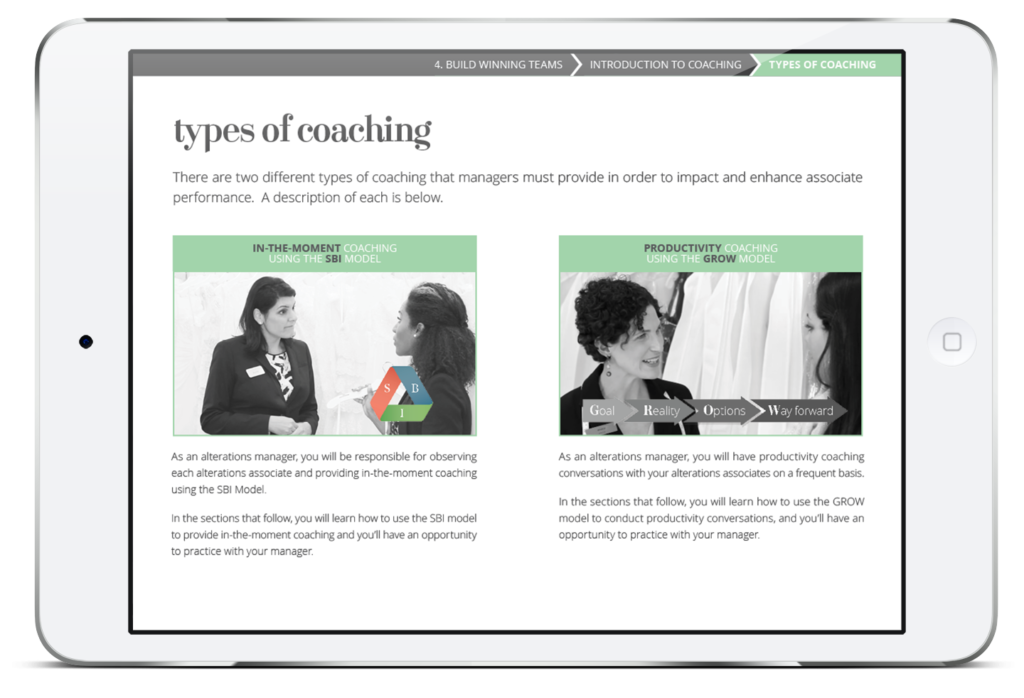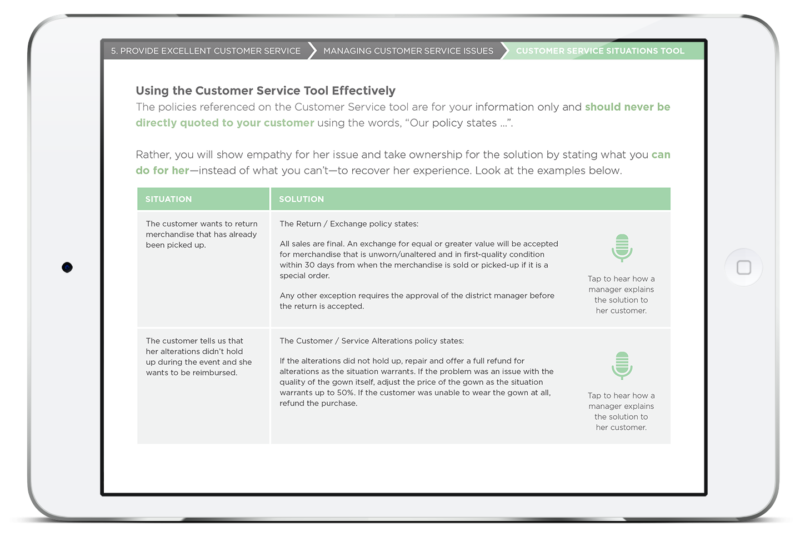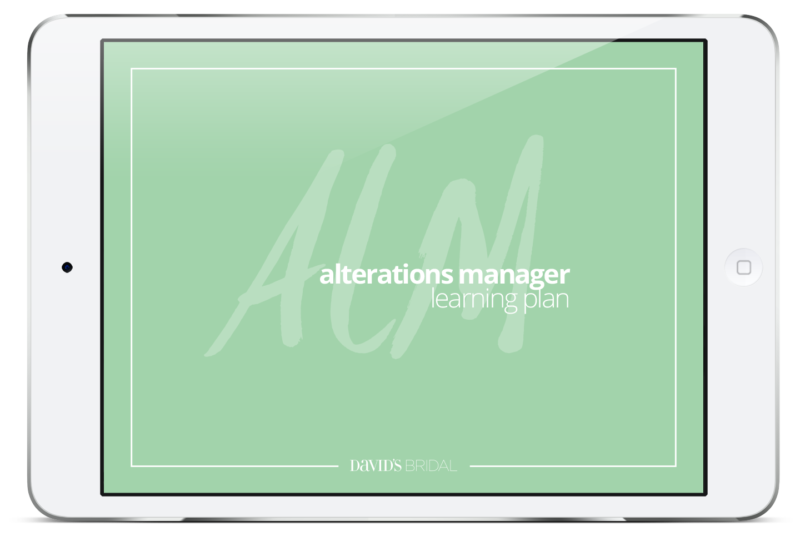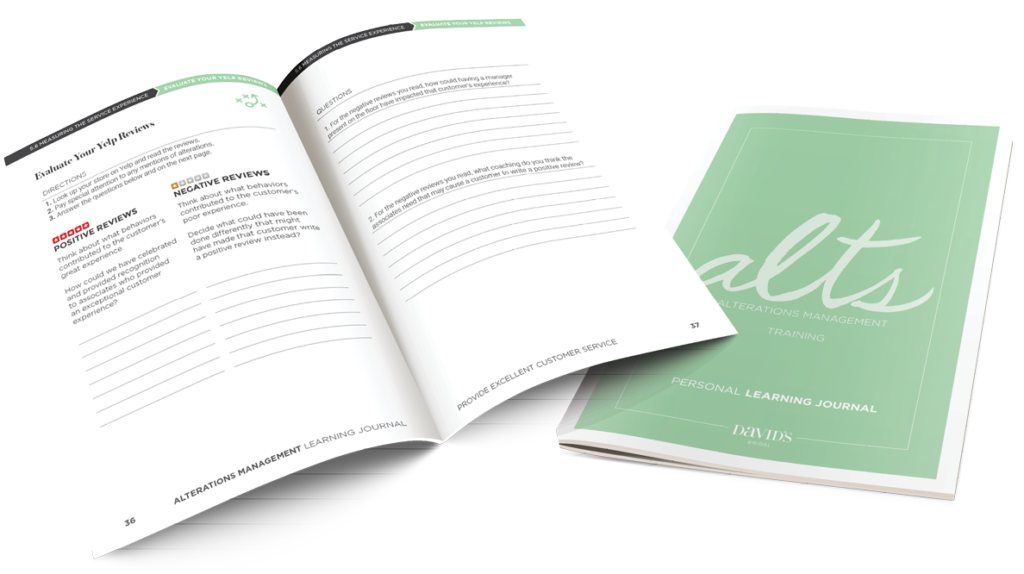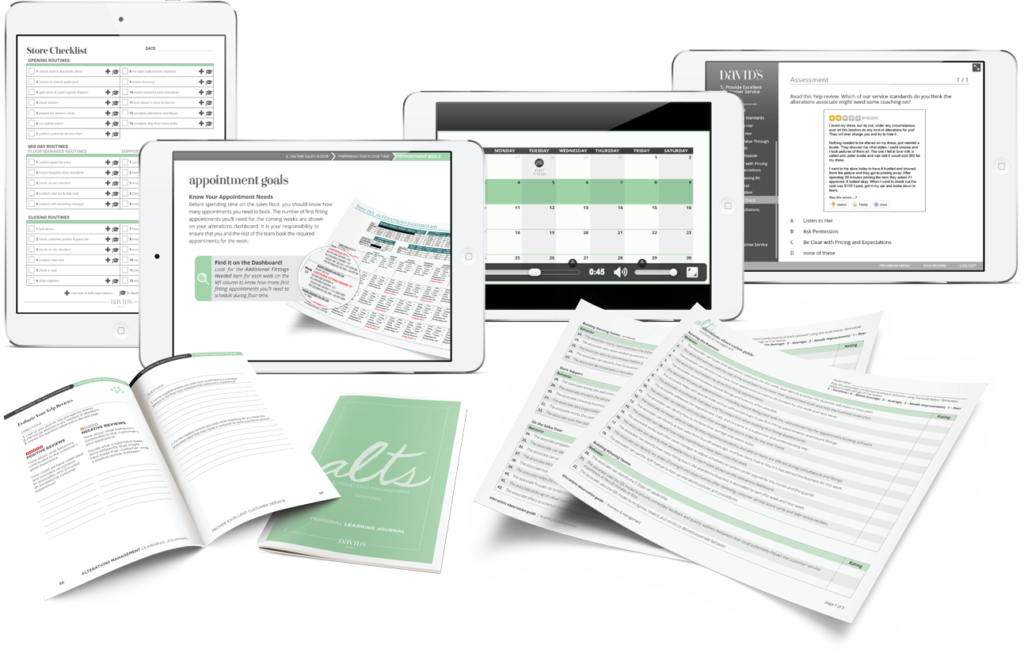
Simultaneously the most challenging and rewarding thing I’ve ever done in my career.
About this Course
Having proven my worth quite soon into my position, I was handed the reigns to Alterations Management—a full course I would design from the ground up in the likeness of existing courses. This was to be the final course developed for the organization to round out all associate positions.
With access to our corporate store and one subject matter expert, I set about learning to manage an alterations room and what makes a good leader. Nine months later, we rolled out a full course, complete with an overhauled new-hire process, new room standards, and a new KPIs for evaluation.
Needs Analysis
In conjunction with my standard training design outline, I conducted several needs studies using Job Task Analysis worksheets I developed. This informed the design of the course and significantly reduced my dependency on the subject matter expert for the duration of the design and implementation phases.
Course Design
I always like to start a project organized. That way, I’ll stay organized from the design phase through evaluation phase. The key to that, I think, is a good training design document.
One of the parameters was that the course follow the company’s Five Steps of Leadership. This put much-needed constraints in place and provided a good foundation for my particular method of organization.
Leadership and Coaching Videos
One of the pillars of this course was to demonstrate leadership qualities which included communication, in-the-moment coaching, as well as coaching for productivity through a set of high-production videos. Writing the scripts for these videos required close work with subject matter experts, leadership experts, and the head of the Alterations department.
Software / Tools Used:
Adobe Creative Suite
Report-Reading Animated Videos
Another huge pillar of this course was reading—and making decisions based on—the results of a complex report called the Alterations Dashboard.
The approach I took was to combine the visual and auditory modalities for a series of animated videos that show how the alterations business runs and the relationships between data points.
Software / Tools Used:
Adobe Creative Suite
Camtasia Studio
Audacity
Interactive Modules
All of the self-led pieces including the videos above were combined with other interactive modules and manager touch points, and delivered via our self-led app. These modules were interspersed with knowledge checks and skill verifications.
Facilitator Guide and Learning Plan
While developing the facilitator guide, I recognized it needed to be more of a learning plan and training record, as the associate-in-training was to travel to several stores—including their home store—during the three-week training period. This change was integral to the implementation phase and widely supported throughout the organization.
In addition to the training curriculum and clear schedules, the new learning plan included coaching guidelines, milestones, and instructions for manager check-ins.
Learning Journal
When designing training, I like to leverage existing tools and materials when possible—like process manuals and standards of practice.
Because our SOP manual was also updated as part of this project, I incorporated it into course activities, using the Learning Journal to ensure compliance and retention, track progress, and aid in skill verification and certification.
Skill Verification
There are two major certifications for this course:
- the Certified Trainer certifies the technical skills at the host store
- the Store Manager certifies leadership skills at the home store
The structure of this certification mimics that of the previous training too boost efficacy through repetition and familiarity.




